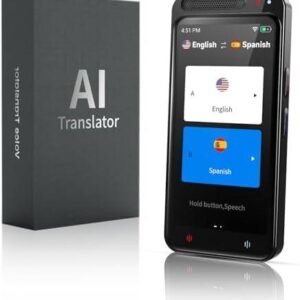In an era where technology permeates every facet of our lives, the landscape of education is experiencing a revolutionary shift powered by artificial intelligence (AI). Gone are the days of one-size-fits-all teaching methods; today’s classrooms are evolving into dynamic, adaptive learning environments that cater to the unique needs of each student. With the ability to analyze data in real time and personalize learning experiences, AI is not just enhancing educational practices; it’s fundamentally transforming them. In this article, we’ll explore how AI is reshaping the way educators approach instruction, fostering inclusivity and engagement, while equipping learners with the personalized support they need to thrive. Join us as we delve into the promising future of education, where technology and human ingenuity come together to create a more responsive and effective learning experience for all.
Table of Contents
- Innovative Applications of AI in Tailoring Learning Experiences
- Enhancing Student Engagement Through Personalized Learning Pathways
- Data-Driven Decision Making: Leveraging Analytics for Continuous Improvement
- Building a Collaborative Environment: Integrating AI into Educator Support Systems
- In Retrospect
Innovative Applications of AI in Tailoring Learning Experiences
Artificial Intelligence is ushering in a new era of personalized education by enabling tailored learning experiences that cater to individual student needs. By harnessing machine learning algorithms, educators can analyze student performance data to refine curricular materials effectively. This means that learners are no longer bound to a one-size-fits-all approach; instead, they encounter resources that adapt in real-time based on their progress. Key features of these innovative systems include:
- Real-Time Feedback: Immediate assessments help students understand their weaknesses and strengths without delay.
- Personalized Content Delivery: AI curates resources that resonate with each learner’s unique interests and capabilities.
- Predictive Analytics: By analyzing patterns, AI can forecast learning challenges and recommend proactive interventions.
Moreover, the integration of AI fosters a more engaging and interactive environment that stimulates learner curiosity. Gamified assessments and interactive simulations, powered by AI, engage students at deeper levels and enhance retention rates. Consider these examples of AI applications transforming educational landscapes:
| Application | Description |
|---|---|
| Smart Tutoring Systems | Adaptive systems that provide instructions based on individual learner responses. |
| Content Recommendation Engines | AI-driven platforms suggest resources to learners, enhancing their learning paths. |
| Assessments Analysis Tools | AI evaluates test results to identify curriculum improvements and personalize programs. |
Enhancing Student Engagement Through Personalized Learning Pathways
Personalized learning pathways leverage data-driven insights to tailor educational experiences to each student’s unique needs, preferences, and learning styles. By employing artificial intelligence, educators can create dynamic learning experiences that adapt in real-time, ensuring that all students remain motivated and engaged. These pathways allow for a variety of instructional methods, which may include:
- Customized content delivery based on individual learning speeds
- Interactive assessments that adjust in difficulty according to student performance
- Dedicated support resources to address specific learning gaps
The effectiveness of personalized learning pathways can be maximized through the integration of student feedback and analytics. Educators can utilize AI tools to monitor progress and gather insights on engagement levels, enabling them to refine the learning experience continuously. A collaborative approach fosters a community of learners who can benefit from a tailored educational environment, highlighted by:
| Engagement Strategies | Benefits |
|---|---|
| Gamification Elements | Increases motivation and participation |
| Flexible Learning Resources | Caters to diverse learning styles |
| Real-time Feedback | Encourages self-reflection and improvement |
Data-Driven Decision Making: Leveraging Analytics for Continuous Improvement
In today’s education landscape, data-driven decision-making is transforming how educators engage with students. By harnessing the power of analytics, institutions can identify learning patterns and trends that inform both teaching strategies and curriculum development. This proactive approach enables educators to adapt their methods and materials in real time, facilitating a personalized learning experience. Key aspects of leveraging analytics include:
- Identifying Learning Gaps: Recognizing which concepts students struggle with allows for targeted interventions.
- Enhancing Student Engagement: Analytics can reveal how students interact with content, helping to design more compelling learning experiences.
- Measuring Outcomes: Continuous assessment through data helps gauge the effectiveness of educational strategies.
Moreover, as adaptive learning platforms evolve, the integration of AI-driven tools becomes paramount. Educators can utilize predictive analytics to forecast student success rates and tailor their support accordingly. This results in a more agile educational environment where feedback loops are established, making improvement an ongoing process. The benefits of this approach are illustrated in the table below, highlighting the impact of analytics on different educational outcomes:
| Outcome | Before Analytics | After Analytics |
|---|---|---|
| Student Retention | 60% | 80% |
| Course Completion | 75% | 90% |
| Test Scores Improvement | 5% | 15% |
Building a Collaborative Environment: Integrating AI into Educator Support Systems
Creating a collaborative environment in education requires the seamless integration of AI technologies into existing support systems for educators. By leveraging AI, we can enable teachers to access tailored resources that align with their unique classroom needs, fostering a supportive atmosphere for both educators and learners. This technology transforms traditional roles by equipping educators with data-driven insights, allowing them to focus on personalized teaching strategies while minimizing administrative burdens. Key components of this integration include:
- Real-Time Data Analytics: Analyze student performance to identify areas needing attention.
- Resource Sharing Platforms: Facilitate collaboration among educators to share effective teaching materials and strategies.
- Professional Development: Offer AI-powered training modules designed to enhance teaching skills and adapt to changing educational landscapes.
Furthermore, embedding AI into educator support systems helps bridge the gap between traditional teaching methods and modern pedagogical approaches. The following table illustrates some essential AI-driven tools that can elevate collaborative efforts:
| Tool | Functionality | Benefits |
|---|---|---|
| AI Lesson Planner | Generates personalized lesson plans | Enhances instructional quality with minimal effort |
| Peer Review System | Facilitates feedback among educators | Promotes continuous improvement and collaboration |
| Student Analytics Dashboard | Tracks learner progress and engagement | Informs targeted interventions and support |
In Retrospect
As we stand on the cusp of a new era in education, the integration of AI into adaptive learning environments heralds a transformative shift in how we approach teaching and learning. The personalized experiences powered by artificial intelligence not only cater to individual learning styles but also empower educators to refine their methods in real-time, ensuring that each student receives the support they need to thrive.
As we continue to explore the possibilities that AI presents, it’s essential for stakeholders—educators, policymakers, and technologists—to collaborate in harnessing this potential responsibly and ethically. By prioritizing accessibility and inclusivity, we can ensure that these advancements benefit all learners, leaving no one behind.
The journey towards a more adaptive and responsive educational landscape is just beginning. As we embrace the opportunities that AI offers, let’s remain committed to fostering environments where curiosity, creativity, and critical thinking flourish. Together, we can reshape the future of education, creating pathways for every learner to succeed in an ever-evolving world.
Thank you for joining us on this exploration of AI’s impact on education. We encourage you to share your thoughts and experiences as we collectively navigate this exciting transformation.





